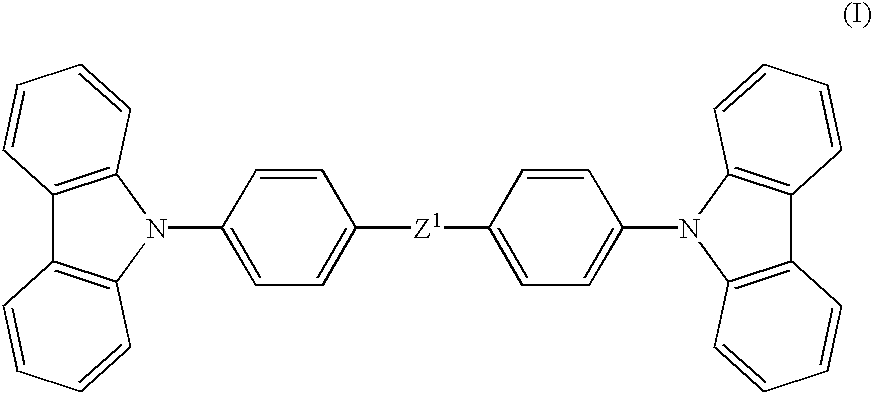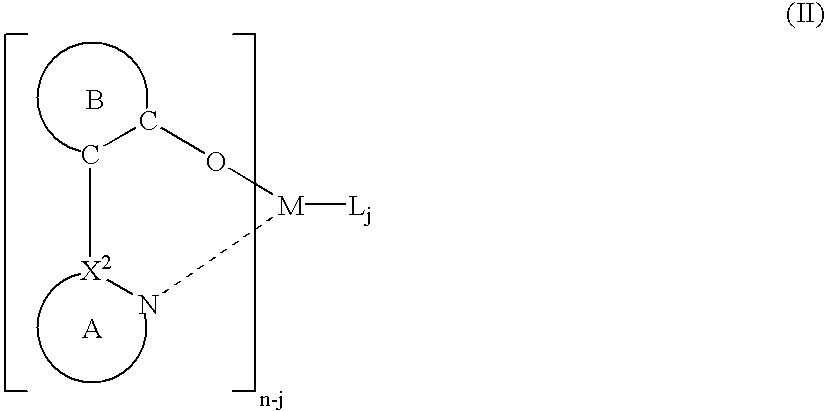Organic electroluminescent device
a technology of electroluminescent devices and electroluminescent tubes, which is applied in the direction of discharge tube luminescnet screens, natural mineral layered products, etc., can solve the problems of difficult color emission, low luminance, and high cost of peripheral driving circuits, and achieve light emission efficiency, inhibit the deterioration of luminance, and high efficiency
- Summary
- Abstract
- Description
- Claims
- Application Information
AI Technical Summary
Benefits of technology
Problems solved by technology
Method used
Image
Examples
Embodiment Construction
[0047] The present invention relates to an organic electroluminescent device containing a host material, Compound A capable of phosphorescence emission at room temperature and Compound B capable of phosphorescence emission or fluorescence emission at room temperature in the light-emitting layer, and having a maximum light emission wavelength attributable to Compound B. In the organic electroluminescent device, the light-emitting layer preferably contains the host material as a main component and Compound A and Compound B as sub-components.
[0048] The term "main component" as used herein means a material occupying 50% by weight or more in the materials constituting the layer and the term "sub-component" means a material occupying less than 50% by weight in the materials constituting the layer. That is, the term "contains Compounds A and B as sub-components" means that the total amount of Compound A and Compound B is less than 50% by weight based on the materials for forming the light-...
PUM
| Property | Measurement | Unit |
|---|---|---|
| Length | aaaaa | aaaaa |
| Molecular weight | aaaaa | aaaaa |
| Fluorescence | aaaaa | aaaaa |
Abstract
Description
Claims
Application Information
 Login to View More
Login to View More - R&D
- Intellectual Property
- Life Sciences
- Materials
- Tech Scout
- Unparalleled Data Quality
- Higher Quality Content
- 60% Fewer Hallucinations
Browse by: Latest US Patents, China's latest patents, Technical Efficacy Thesaurus, Application Domain, Technology Topic, Popular Technical Reports.
© 2025 PatSnap. All rights reserved.Legal|Privacy policy|Modern Slavery Act Transparency Statement|Sitemap|About US| Contact US: help@patsnap.com



